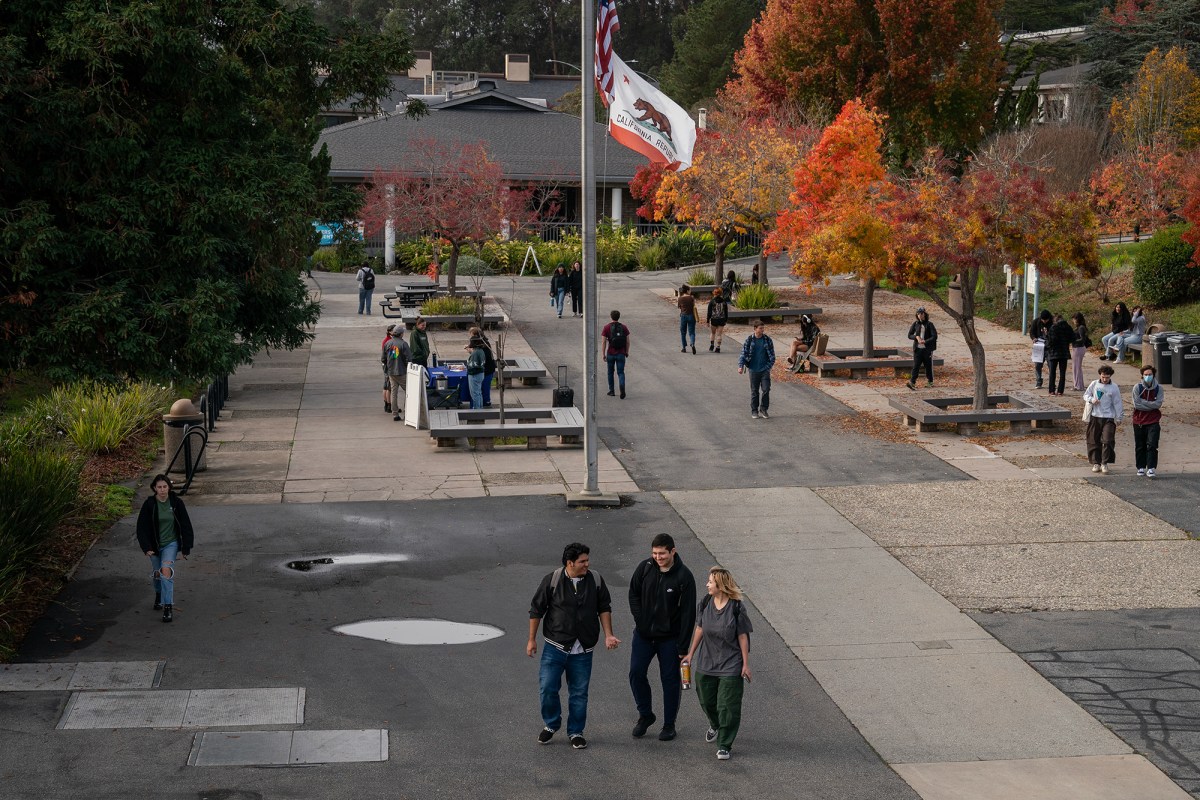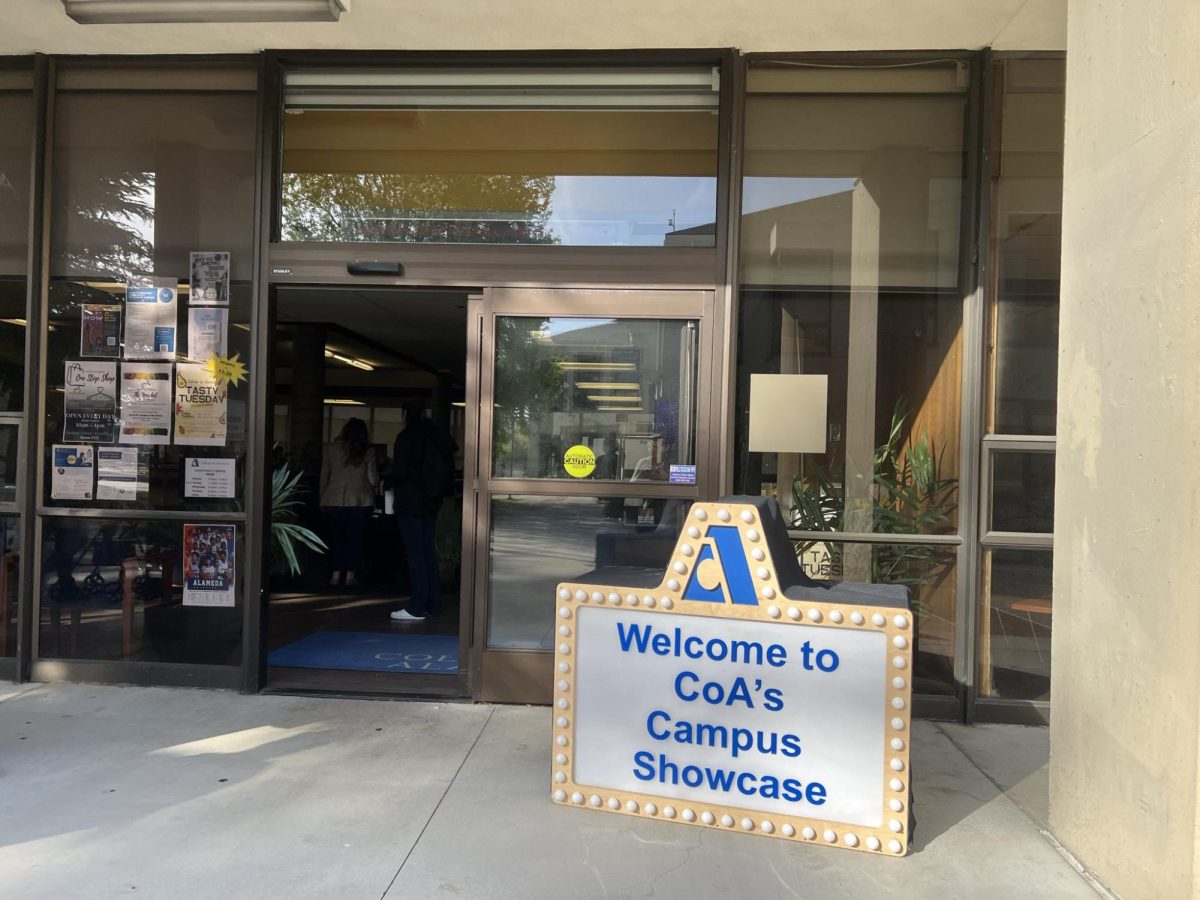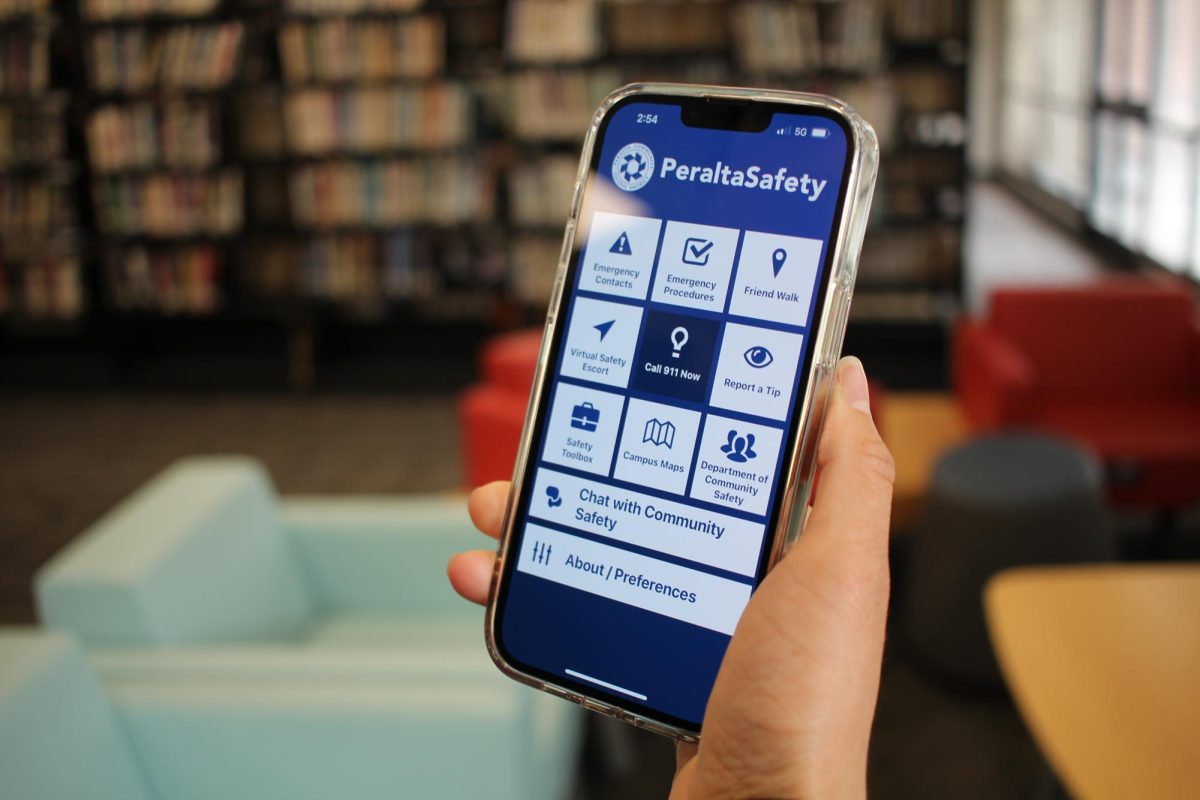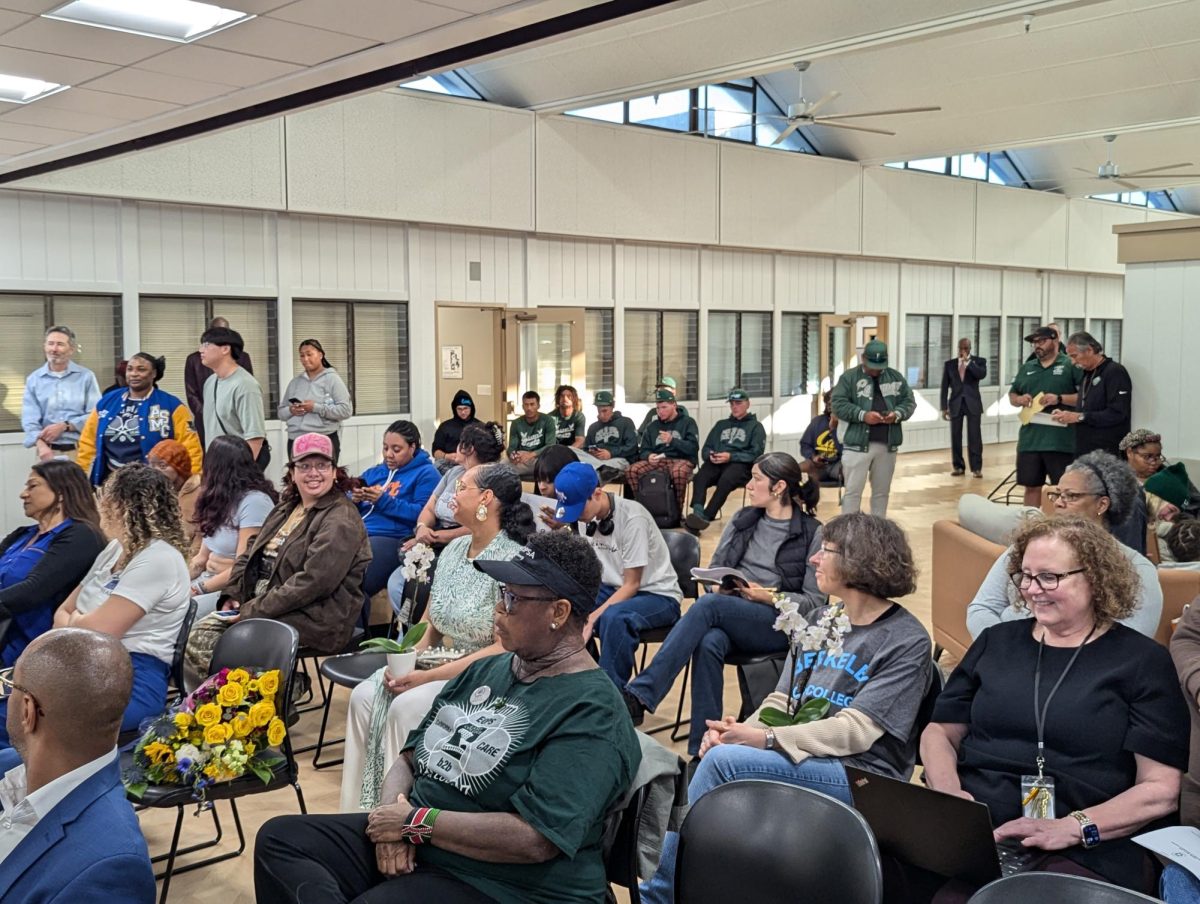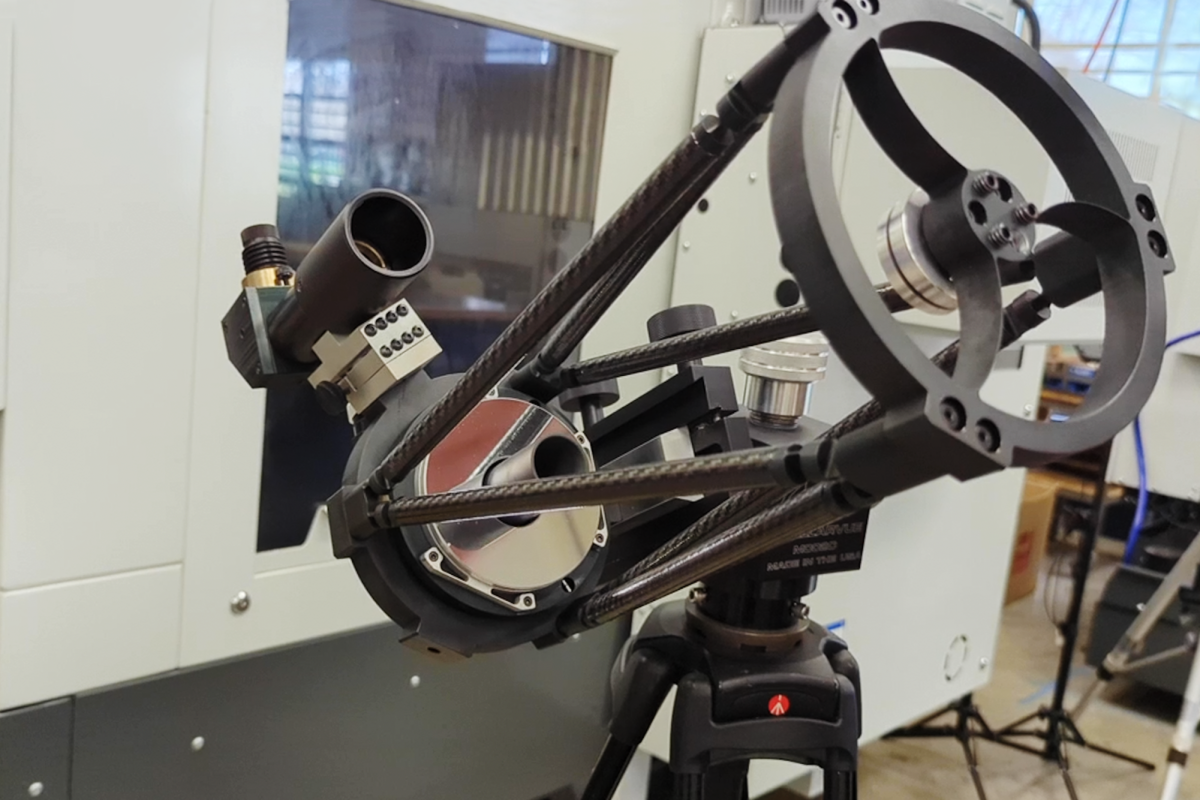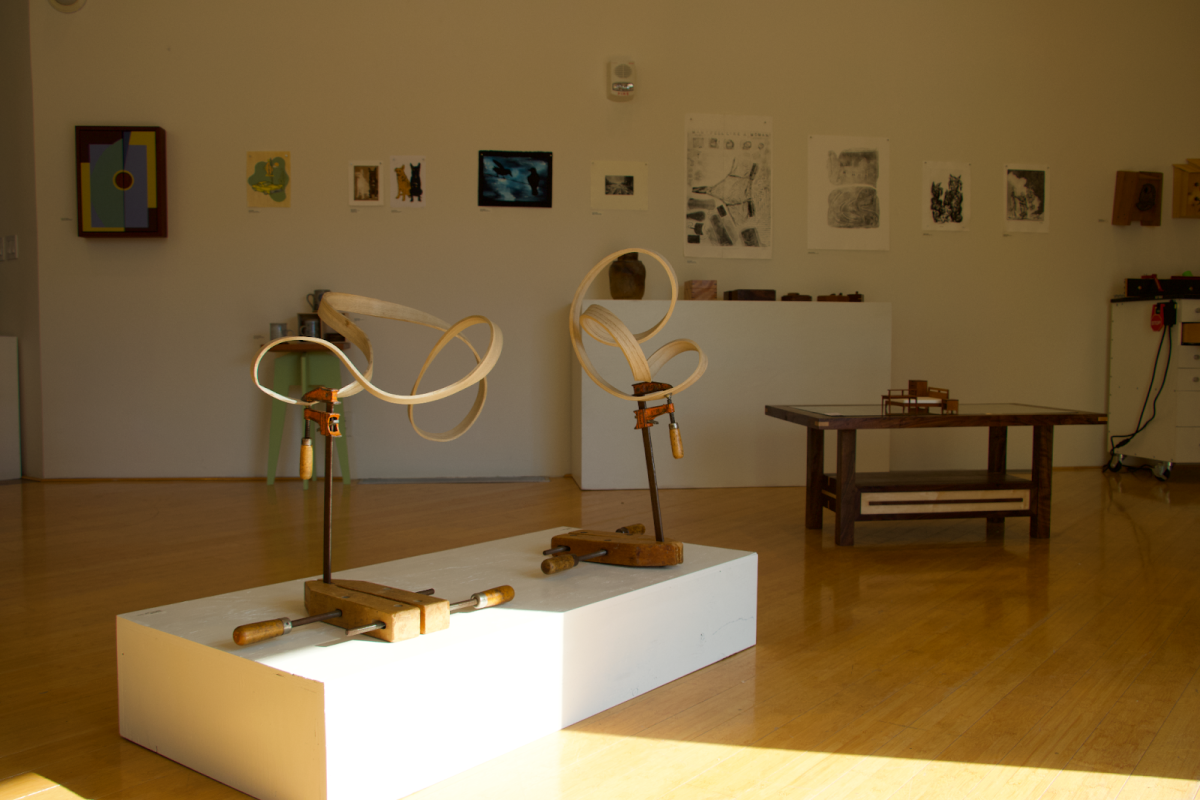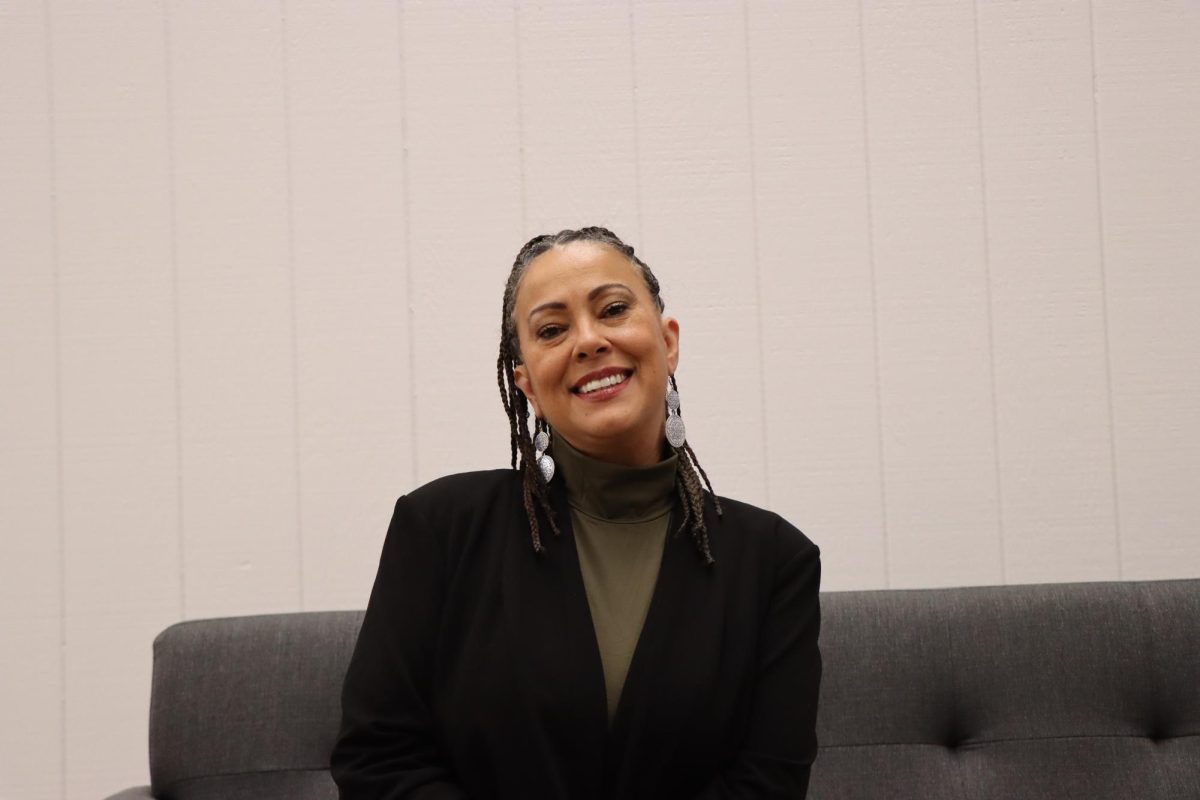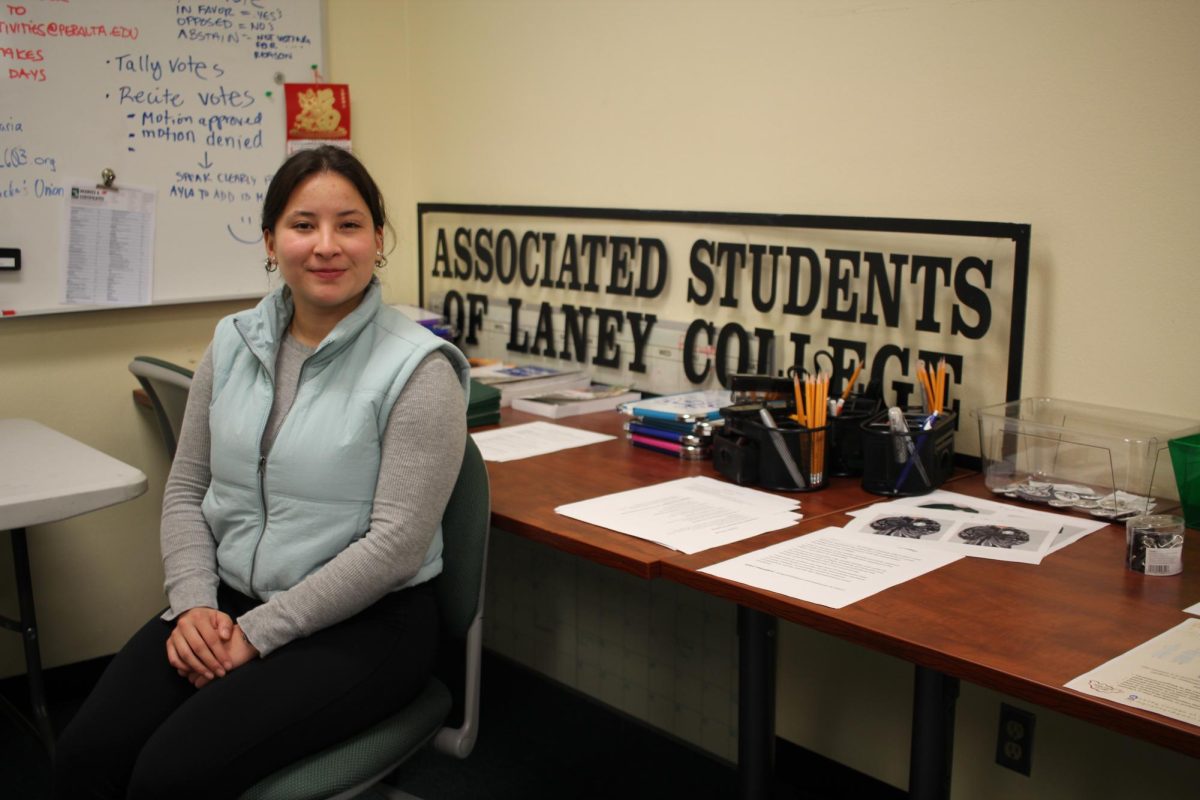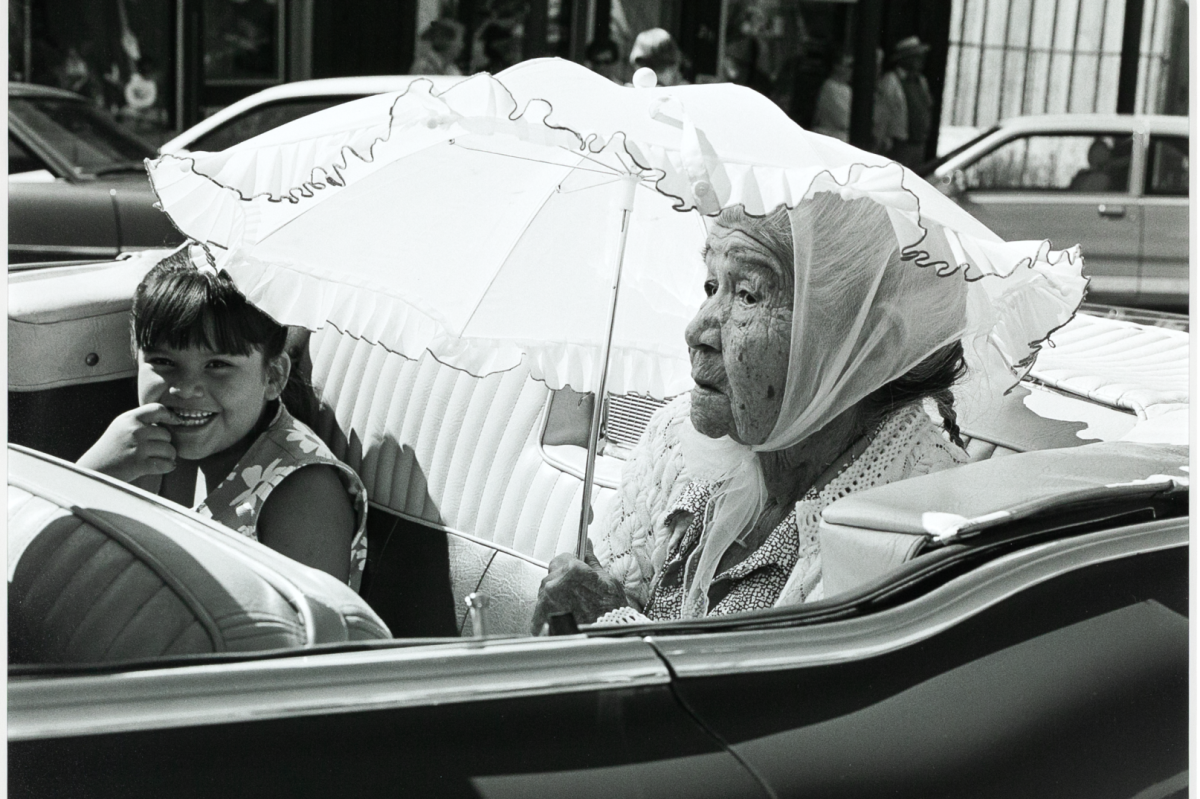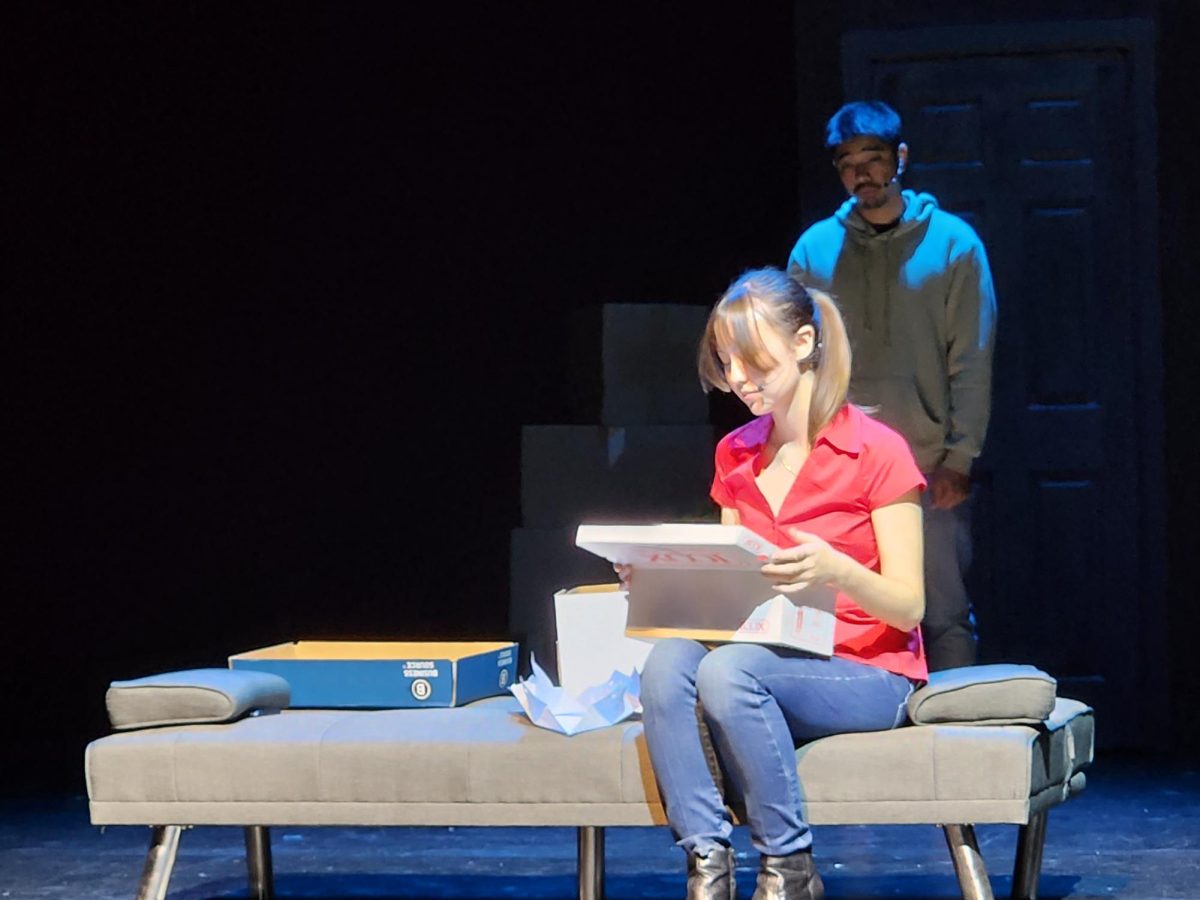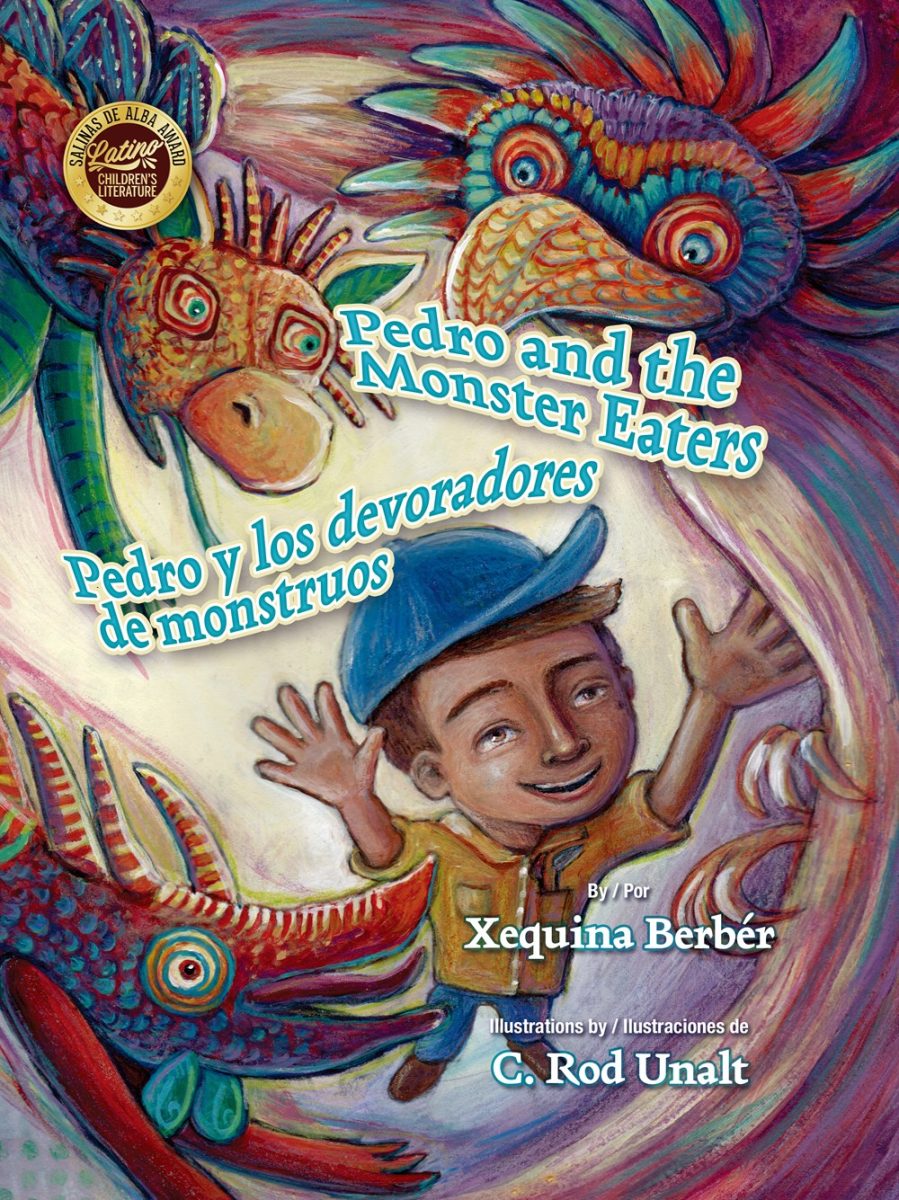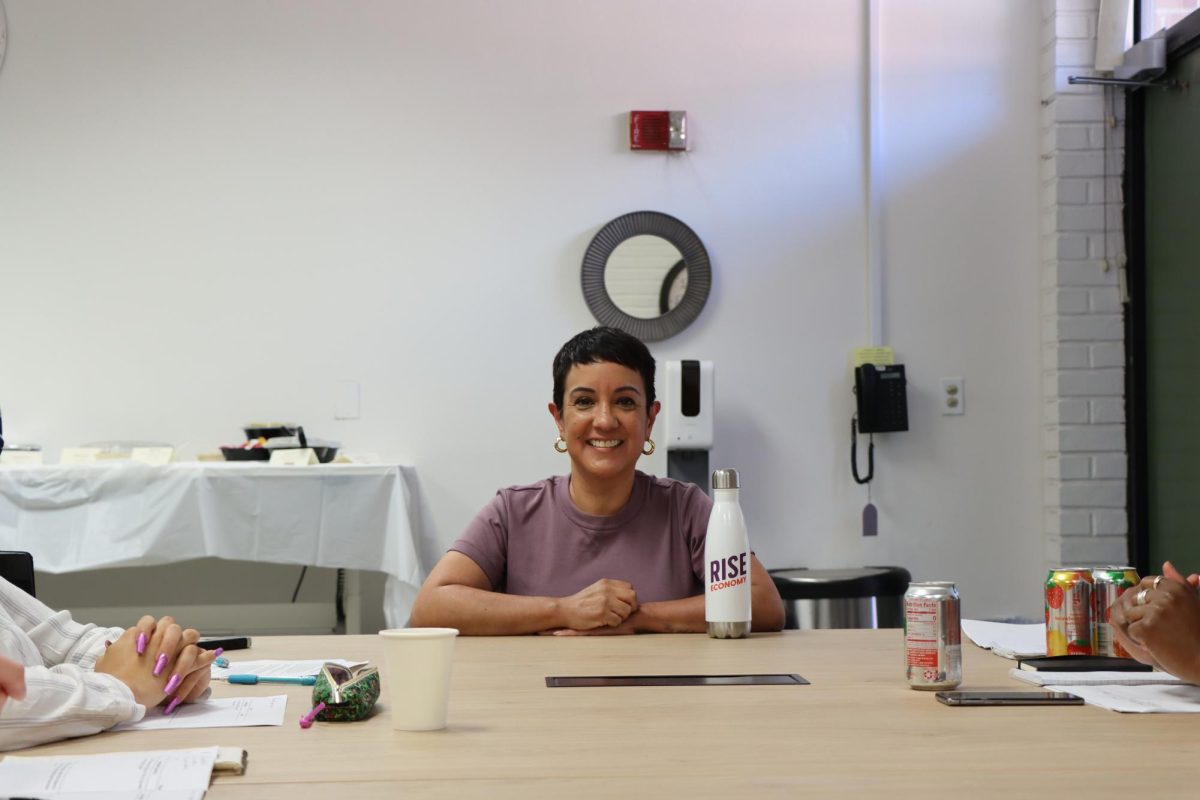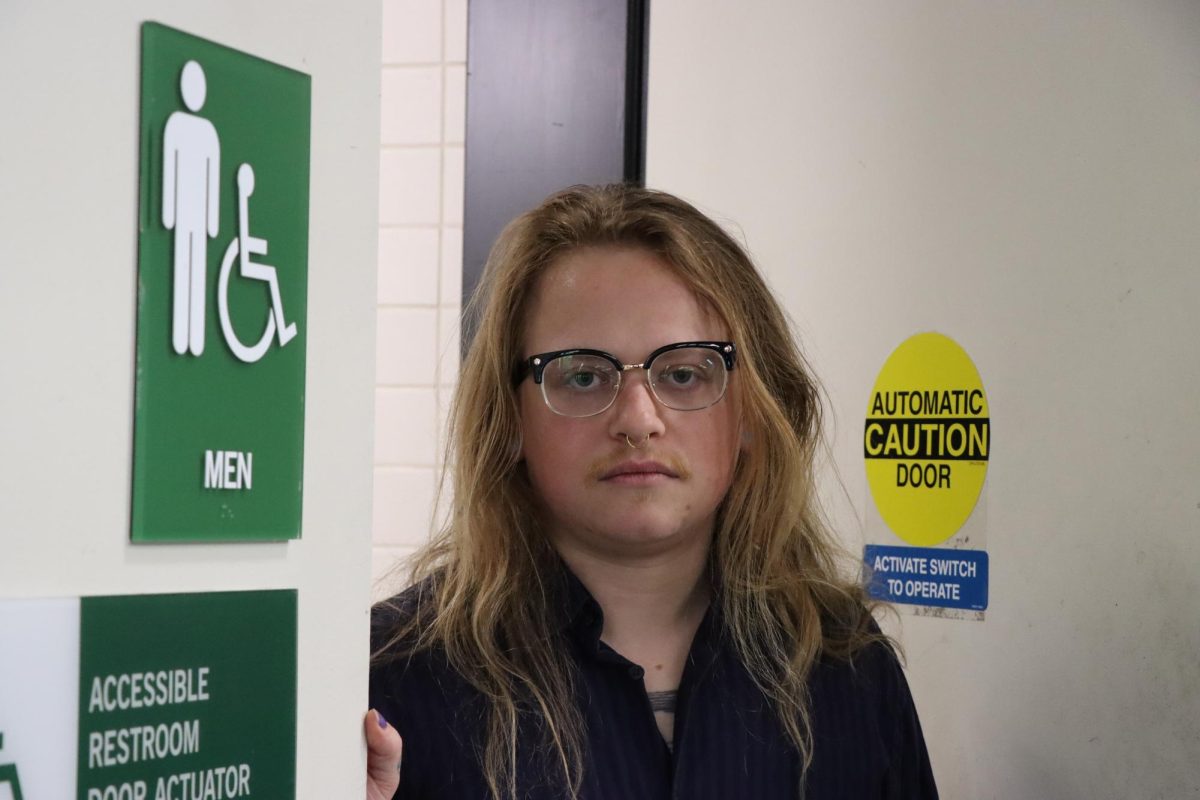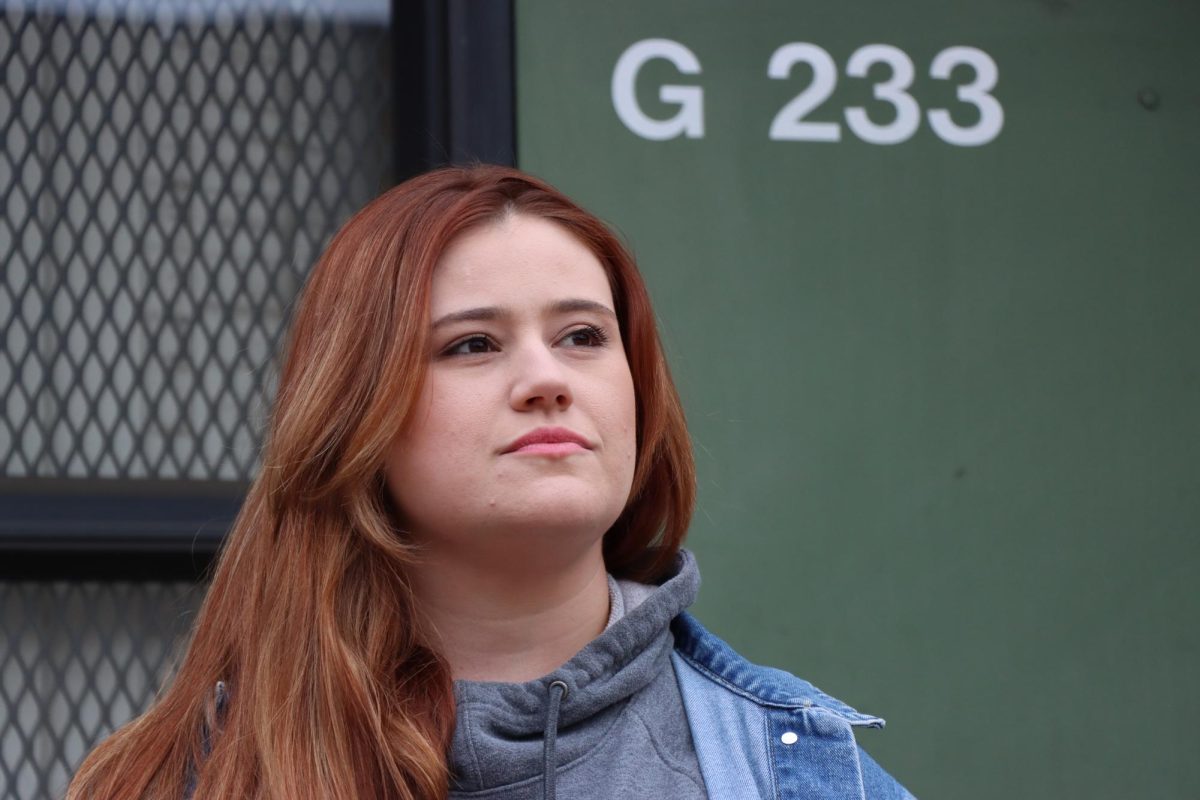By Shane Frink
“The architecture is magnificent and unique,” Pam Wong said, describing San Francisco’s Chinese Historical Society of America (CHSA).
Wong is the director of the CHSA, a building and museum that is a unique experience.
The CHSA is on a steep hill in San Francisco’s Chinatown at 965 Clay Street. The building was designed by Julia Morgan, best known for designing Hearst Castle.
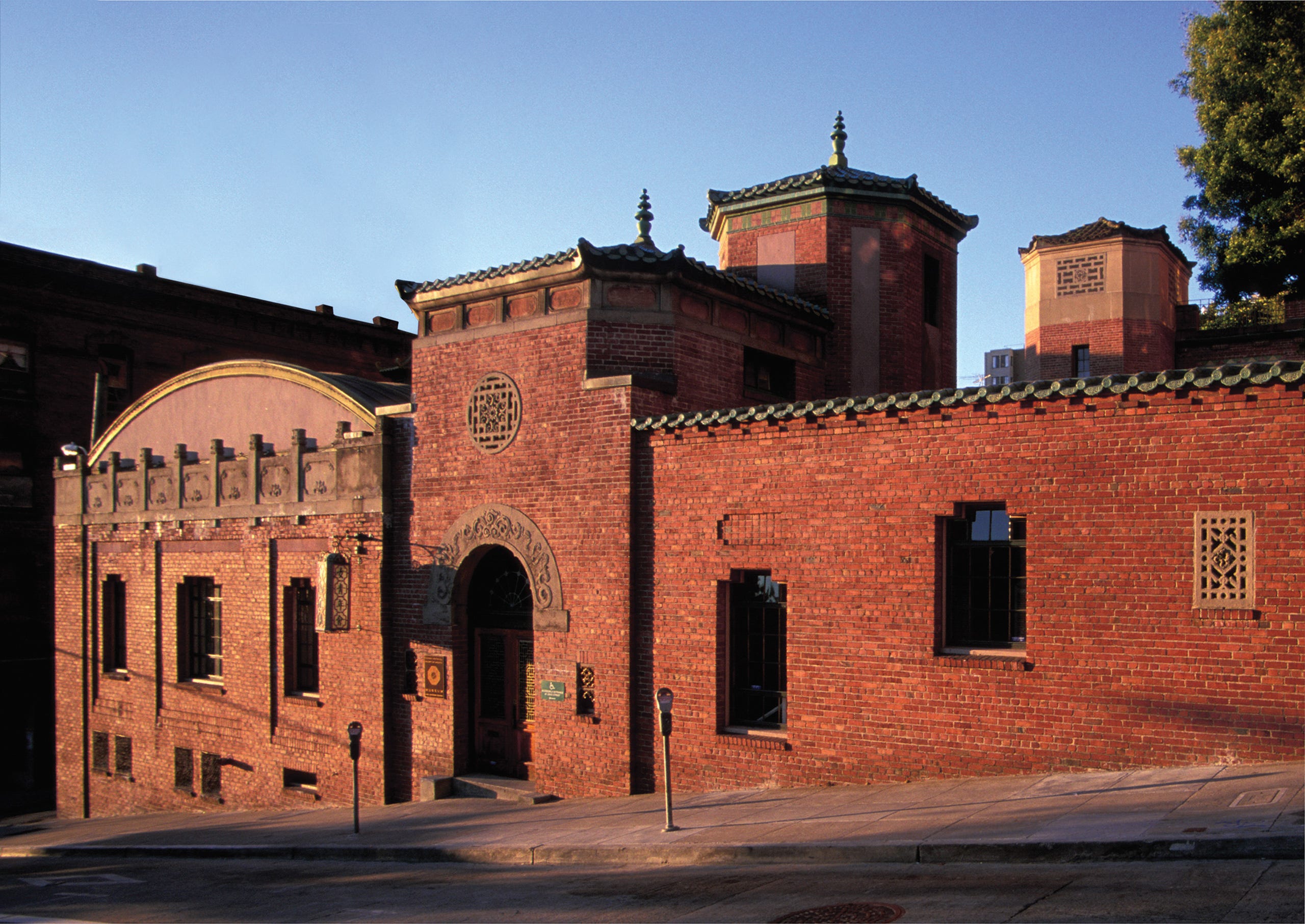
The CHSA museum isn’t in a castle, but it is an impressive building that was built in 1932 as the Chinatown YWCA. Inside and out, the museum is very different than any of San Francisco’s museums.
“Morgan incorporated Chinese styles such as a courtyard with a koi pond, three Chinese-style towers,” Wong said. “[It has] tiles glazed with Chinese motifs, and a dragon painted on the floor.”
On the afternoon of March 3, a family of patrons browsing the museum commented to each other about the creative layout of the museum as they checked out the art work.
The older man in the group noted that the “design has beautiful old-school styles.”
His son nodded his head and got down on his knees to inspect the intricate and beautiful dragon.
Anna Wong
The CHSA has a small room that shows a short film about Anna May Wong, the first Chinese-American movie star. Viewers will learn that Hollywood’s issues with racism were even worse in Wong’s time.
Wong was the first Asian actor that played an Asian character. Before her, those roles were played by Caucasians in “yellow face” makeup. Wong’s career is a testament to civil rights.
In 1924, Wong was catapulted into the “big time” when she was in the two million dollar production “Thief of Bagdad.” She was cast as a treacherous Mongol slave.
She became discouraged by always being asked to play “dragon lady” villain roles, and moved to Europe in 1928. She made A-list movies in the UK and Germany, and also starred in plays there.
Wong was given a contract with Paramount after three years in Europe.
Her career hit another high when she starred next to Marlene Dietrich in “Shanghai Express.” Wong appeared in several other American movies over the next 20 years.
In 1951, Wong played a Chinese detective on her own show. The half-hour long show aired weekly and was called “The Gallery of Madame Liu-Tsong,” named after her own last name. It was the first TV show in the United States to star an Asian American.
Anna May Wong was also in over 50 American, English and German films.
This makes her the first global Chinese-American movie star.
Museum visitors watching the CHSA video segment on March 3 were moved by Wong’s intensity, and the information that was shown. While one couple was watching, the woman cried a little, and the man quietly told her that she was almost as pretty as Wong. She giggled and sniffled, then their attention went right back to the video screen.
Wong has received much attention recently, including a biography called From Laundryman’s Daughter to Hollywood Legend, written by Graham Russell and Gao Hodges.
Wong is a pioneering Chinese American woman, an ideal figure to celebrate during Women’s History Month.
Jake Lee
A colorful representation of art work called Chinese Opera House from the early 1900’s caught the attention of one family visiting the museum on March 3.
It’s one of the eight paintings by Jake Lee that the museum has on display.
The painting is an amazing representation of life in San Francisco’s Chinatown from the mid-1800 through 1910.

The water color painting, in vibrant red, yellow, blue, gray, and green shows people outside the opera house. The artist captures the audience’s style of clothing in an authentic way.
The artist even captures the people’s shadows cast on the marble sidewalk from an afternoon sun, an exceptional feat for watercolors.
Lee is a famous Chinese-American artist known in the high society social circles of the 1950’s because of his 12 water color paintings that hung at the San Francisco Chinatown Kan’s Restaurant in the infamous Gum Shan Room.
Lee’s paintings from Kan’s were in several popular news magazines in the 1950’s, so American’s interested in art knew of this art work. In the 90’s the restaurant was sold and the paintings went missing.
Art historians looked to no avail for years. No one knew where the works of art had disappeared to.
Then in 2010 an email was sent to the Executive Director from Chinese Historical Society of America, saying that 11 of the missing 12 paintings were going to be auctioned off in southern California. Ms. Lee (no relation to the artist) went to the auction and purchased seven of the 11 paintings.
Most of the money the museum used was a gift from patrons that understood the importance of getting an integral part of Chinese American art into the hands of CHSA.
Ms. Lee found the missing 12th painting by good investigative work.
Due to Lee’s diligence she located it by contacting every single person that worked at the restaurant before it closed.
The painting was found in the garage of Bloor Chau, who worked at Kan’s as a busboy.
He gave the painting to the museum where it’s on display now.
Frank Wong
A collection of miniatures by Frank Wong is on permanent display in CHSA’s Yick Gallery.
It’s close to impossible to convey how incredibly close to real life these art creations are: close to real, except for being very small. The meticulous coloring of Wong’s diorama “Single Room,” that shows a snapshot of his San Francisco SRO, is astounding.
The viewer feels like they could get into the bed, snap on the lamp, take the book off the bedside table and read a little before falling into a miniatures sleep.

Wong donated seven scenes of Chinatown to the museum in 2004. He said he felt the museum would keep them safe and available for the public to learn about history of a Chinatown he grew up with during the 1940–50’s.
Wong went to Galileo High School and continues to live in San Francisco today.
San Francisco filmmakers James Chan and Corey Tong have almost completed a documentary expected to be aired on PBS entitled, “Frank Wong’s Chinatown.” The movie is said to be about the artist’s life and art but also about the changing landscapes of Chinatown.
The CHSA will continue to document the Chinese immigrant experience in the U.S. by showing art that has important historical relevance. Chinatown will continue to change, and the museum will continue to show art from the past and present.
“We consider the building itself a part of Chinatown’s history,” Wong said. “We aare very lucky to own this building that continues to serve the community.”
If you’re interested in art, history, and the Chinese immigrant experience then a visit to Chinese Historical Society of America is a great idea.
Admire authentic art while you learn about the experiences of Chinese immigrants.
Shane Frink is a Tower Staff Writer.

